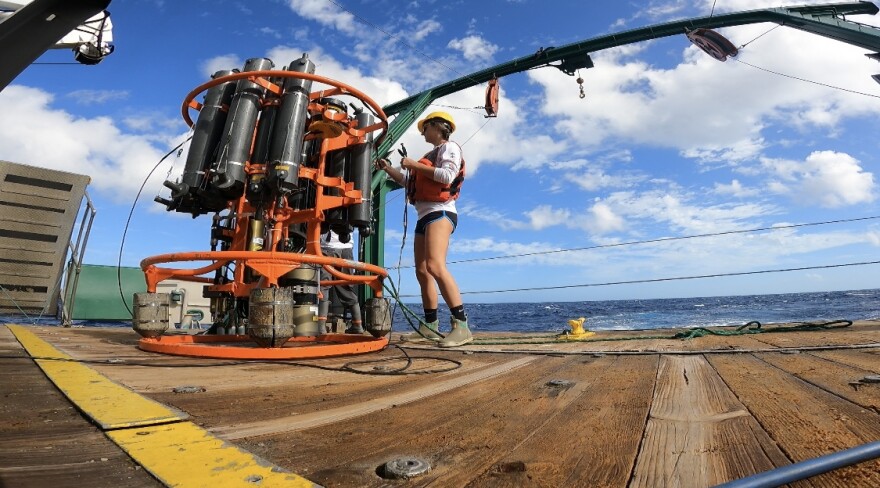A sprawling, slow-moving system of ocean currents circulating in the Atlantic that help regulate the earth's temperature is set to deliver a blob of warmer, saltier water off the U.S. coast, according to a new study published in Nature last month.
Over the next decade, scientists warn that as that water persists, sea levels could rise even more and the current could change.
What's not yet clear is by how much, said Leah Chomiak, lead author on the study conducted by the University of Miami and National Oceanic and Atmospheric Administration's cooperative institute for marine and atmospheric research on Virginia Key.
READ MORE: How an eddy in the Gulf of Mexico could supercharge hurricanes in a busy season
"If it mimics what happened 20 years prior, which we know now is kind of saying 'yes,' then we can expect at least a decade or so of increase in ocean temperature and increase in salinity," she said.
The current, known as the Atlantic Meridional Overturning Circulation, or AMOC, has drawn increasing scrutiny as climate change warms the planet because it plays such a sweeping role. Acting like a cyclical conveyor belt, the AMOC collects hot water from smaller currents in the tropics — which can fuel hurricanes — and moves it north where it can warm polar waters and then south again.
"If you think of the ocean as the human body, these currents are the body's circulatory system," Chomiak said.
Suggestions that the AMOC might collapse have drawn intense scrutiny as climate change warms the planet. Most scientists generally agree it's slowing, but not in danger of falling apart — a grimly catastrophic outcome.
To track changes, scientists rely on both satellites and ocean-based observations. But while satellites have greatly improved monitoring for surface currents that deliver warm water, like the Gulf Stream, deeper, colder currents mostly rely on physical monitoring through sensors and ship-based readings, Chomiak explained.
An array that stretches west from the Bahamas across the Atlantic Ocean has provided much of the information in the tropical Atlantic with anchored and ship-based readings. For four decades, the array has picked up changes in temperature and salinity at more than a mile deep.

"It's a really complicated science, but this is where observations are a huge asset because we need observations in order to understand how things are changing," said Chomiak from aboard a research ship in the Indian Ocean where she was working on another study. UM also works with the United Kingdom to monitor changes in the North Atlantic.
The role of temperature, salinity
Knowing that scientists had been studying the amount of water crossing the array for 40 years, Chomiak wondered if looking at temperature and salinity data might also have something to say.
"We have that data (on volume). But in terms of the blood within these arteries, that's kind of how I look at it," she said.
When she took a closer look, she discovered a cooling and freshening trend in polar waters that coincided with an extended period of stormy weather.
"There was a multi-decade cooling and freshening event that started in the 1960s even," she said.
Scientists called it the great salinity anomaly, in case it comes up as a Jeopardy question.
"It was an anomalous period that basically left a fingerprint in the ocean waters that we can still see 20 years later as they're making their way south," she said.
Monitoring showed it took 20 years to travel the circuit. It also showed in about 2000, a rise in temperature and salinity in the sub polar region, suggesting a 40-year travel time. If that clock watch is accurate, Chomiak said, warmer and saltier conditions should begin, or already appear in deep waters off the U.S. coast.
That could drive up sea level rise or change the current itself since temperature and salinity help determine the strength of the circulation by causing water to rise and fall.
"One of the main implications from a societal point of view is how is this going to affect our coastal communities?" she said. "We don't really have quantitative data in our, let's say hundred years of ocean observations to say, yeah, we've seen this exactly before and we know exactly what's gonna come."
Sign up for WLRN's environment newsletter Field Notes to receive our insider's guide for living in South Florida's changing landscape. Get original reporting and recaps, with context, delivered to your inbox every Friday. Subscribe here.
Copyright 2025 WLRN Public Media





